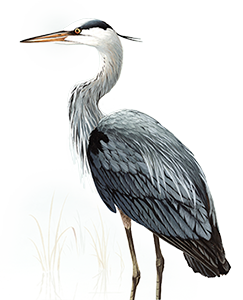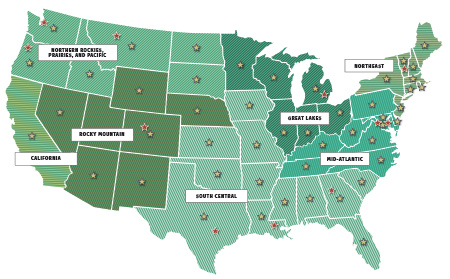Farmers can help mitigate climate change with improved management techniques that promote carbon storage in their soils and reduce their contributions to carbon pollution from chemicals and manure lagoons. Adding carbon to our nation's soils can also help us adapt to climate change, as well as benefit our wildlife, water supplies, and rural economies. Farms with healthy soils are more profitable, more sustainable, and have higher yields in floods and droughts—the kind of weather we can expect more of as our climate changes.
The National Wildlife Federation works with stakeholders to identify barriers to adoption of climate-friendly farming practices and implement solutions at multiple levels. Our current focus for promoting climate-friendly farming includes cover crops, carbon markets, and protecting permanent grasslands.

In the 2011 report, Future Friendly Farming, the National Wildlife Federation offers techniques that farmers and ranchers can use to increase profits, reduce carbon pollution, and protect soil, water, and wildlife habitat. The National Wildlife Federation works with stakeholders to identify barriers to adoption of climate-friendly farming practices and implement solutions at multiple levels. Our current focus for promoting climate-friendly farming includes cover crops, carbon markets, and protecting permanent grasslands.
Growing Outreach
Working lands must be managed to provide critical habitat for our nation’s fish and wildlife, protect our water resources, and help mitigate climate change, while also meeting demands for food, fiber, fuel, and animal feed.
Farmers and ranchers that adopt resilient practices such as no till, diverse crop rotations, rotational grazing, manure management, and cover crops can increase profits and protect the land.
The Conservation Champions and Grow More programs were created to support trainings centered around the adoption of regenerative agriculture practices through tailored messaging and targeted outreach events.
Permanent Grasslands
Permanent grasslands (native grassland that has not been cultivated or disturbed by the plow) are some of the most carbon-rich ecosystems in the world, with grass roots extending up to ten feet below ground. Aboveground, perennial grasses provide habitat and food for declining wildlife species.
Unfortunately North American grasslands are the most threatened ecosystems in the world—even more than the South American rain forest. High crop prices, the rising cost of land, and many other factors have contributed to the grasslands decline. Once grassland has been plowed or converted, it releases stores of carbon from the soil into the atmosphere.
The National Wildlife Federation supports policies to avoid conversion of grasslands and other carbon-rich ecosystems like wetlands into agricultural production. Learn about our work to protect grasslands in the 2014 Farm Bill.
Report: Future Friendly Farming: Seven Agricultural Practices to Sustain People and the Environment »
Report: Options to Address Pollution from Agricultural Drainage »









